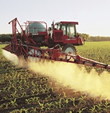With the legislative session beginning tomorrow and an important election in which every seat in the legislature is up for grabs, rural issues are likely to play a key role in the public discourse of Minnesota policy makers. The Center for Rural Policy and Development, a non-profit think tank located in Mankato, Minnesota released its yearly report on the state of rural Minnesota late last week. There are multiple takeaways from the report, each of which will be focused on by Alpha News over the next several weeks.
The report shows that only 2.2% of the Minnesota workforce is employed directly in farming, but multiple counties have more than 20% of the population employed in arguably Minnesota’s oldest profession. Specifically, Northwestern and Southwestern Minnesota employed the most individuals in farming. Marshall county had the largest population of those involved in farming, 22%. The 2011 report shows that 2.6% of Minnesotans were employed in farming. Does a decrease in percentage of Minnesotans employed in farming convey that this sector of the economy is losing steam?
The answer appears to be unclear. According to a Minnesota Department of Agriculture report, despite having the 21st most individuals involved in agriculture (5.4 million), Minnesota agriculture has the fifth highest agricultural cash intake. To put that in perspective, it produces more in cash receipts (cash intake) than 45 states. In addition, it has the largest amount in cash intake among all states in sugarbeet, processed sweet corn, and green peas. Lastly, it has produced the most in turkey livestock cash receipts as well. Cash intake is an effective way of measuring agricultural output, and the agricultural sector’s effect on an economy.
It should be noted that between 2012-2014 the state’s average agricultural exports have decreased by $1.1 billion, and this may cause some to worry about the future of Minnesota’s agricultural economy because exports are a key determinant of how any sector of the economy is doing. However, it is too early to determine if this trend of decreased agricultural exports will continue.
The state of Minnesota’s farming and agriculture economy is still strong, but the fact that exports are decreasing is troubling. It is important to not just focus on how Minnesota’s agricultural and farming economy compares to that of other states, but also keep an eye on how it continues to evolve and change in the upcoming years to ensure that Minnesota’s strong farming traditions are kept and rural Minnesota can continue to grow and prosper. Can Minnesota maintain its reputation as an agricultural powerhouse? Time will tell.












